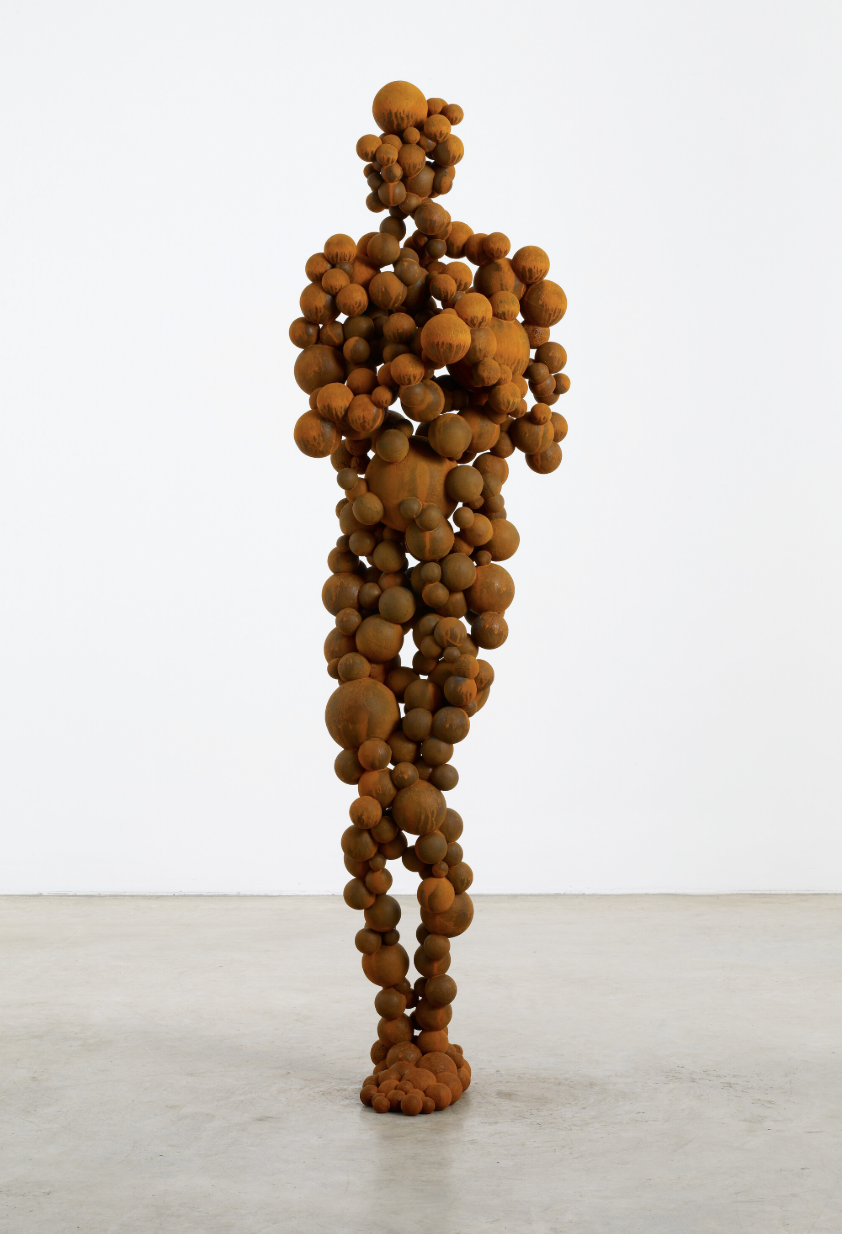Anthony Gormley
Anthony Gormley is a British sculptor whose work explores the relationship between the human body and space, creating powerful, introspective experiences for viewers. Born in 1950 in London, Gormley’s artistic journey began with studies in architecture at the University of Edinburgh, followed by a master’s degree at the prestigious Slade School of Fine Art in London. From the start of his career, Gormley’s work has been marked by a deep interest in the human form, the boundaries between the physical and metaphysical, and the individual’s place within the world.
One of Gormley’s most iconic works is The Angel of the North (1998), a massive public sculpture in Gateshead, England, which stands as a monumental figure with outstretched wings. Its sheer scale and presence in the landscape have made it one of the most recognized and loved sculptures in the world. The piece evokes themes of protection, transformation, and the intersection between humanity and the environment. The figure’s horizontal stance invites the viewer to consider the figure’s relationship to the land and the heavens, and its size challenges the boundaries between the human and the monumental.
Anthony Gormley, A Case for an Angel I, 1989
Throughout his career, Gormley has often used his own body as a starting point for his sculptures, casting himself in different poses to explore themes of vulnerability, isolation, and connection. His Bodycases (1995–2005) series, which features hundreds of life-sized casts of his own body, captures the sense of human fragility, while also creating a deep connection to the viewer, who is forced to confront their own physicality in relation to the sculptural forms.
Perhaps his most famous works are those that invite direct interaction with the viewer, such as Field for the British Isles (1993), a vast installation of thousands of small clay figures, each unique yet collectively embodying the idea of shared humanity. In these works, Gormley transforms the viewer from passive observer to active participant, encouraging them to explore the space and their own place within it. Similarly, his Event Horizon (2007) installation, which placed life-sized casts of human figures on rooftops and public spaces in New York, London, and São Paulo, creates a dialogue between the body and the city, encouraging reflection on how humans interact with and inhabit their environments.
Anthony Gormley, Drawn Apart, 2000
Anthony Gormley, Standing Matter XXXI, 2010
Gormley’s work transcends the physical form, engaging with existential questions about the self, the body, and the vastness of the universe. His sculptures elicit profound emotional responses, from awe and introspection to a sense of shared vulnerability and unity. Through his exploration of the human figure, Gormley forces viewers to confront their own perceptions of space, identity, and existence.
Today, Anthony Gormley lives and works in London. Although he has moved away from the public art scene in recent years, his influence remains undeniable. His sculptures continue to stand as both a reflection on the human condition and a challenge to the way we engage with our physical and emotional surroundings, ensuring that his legacy will continue to provoke and inspire for years to come.
Anthony Gormley, Angel Of The North, 1998



